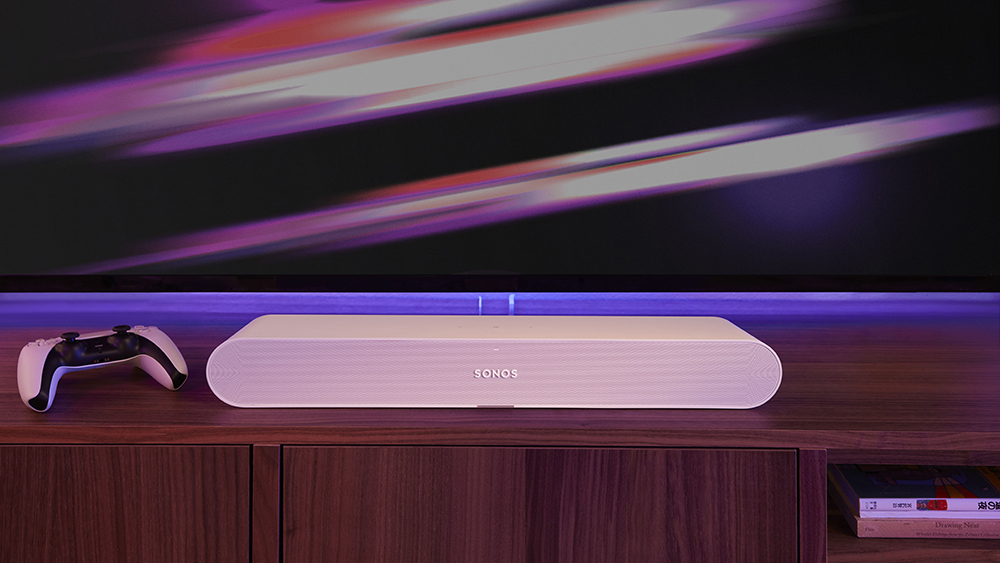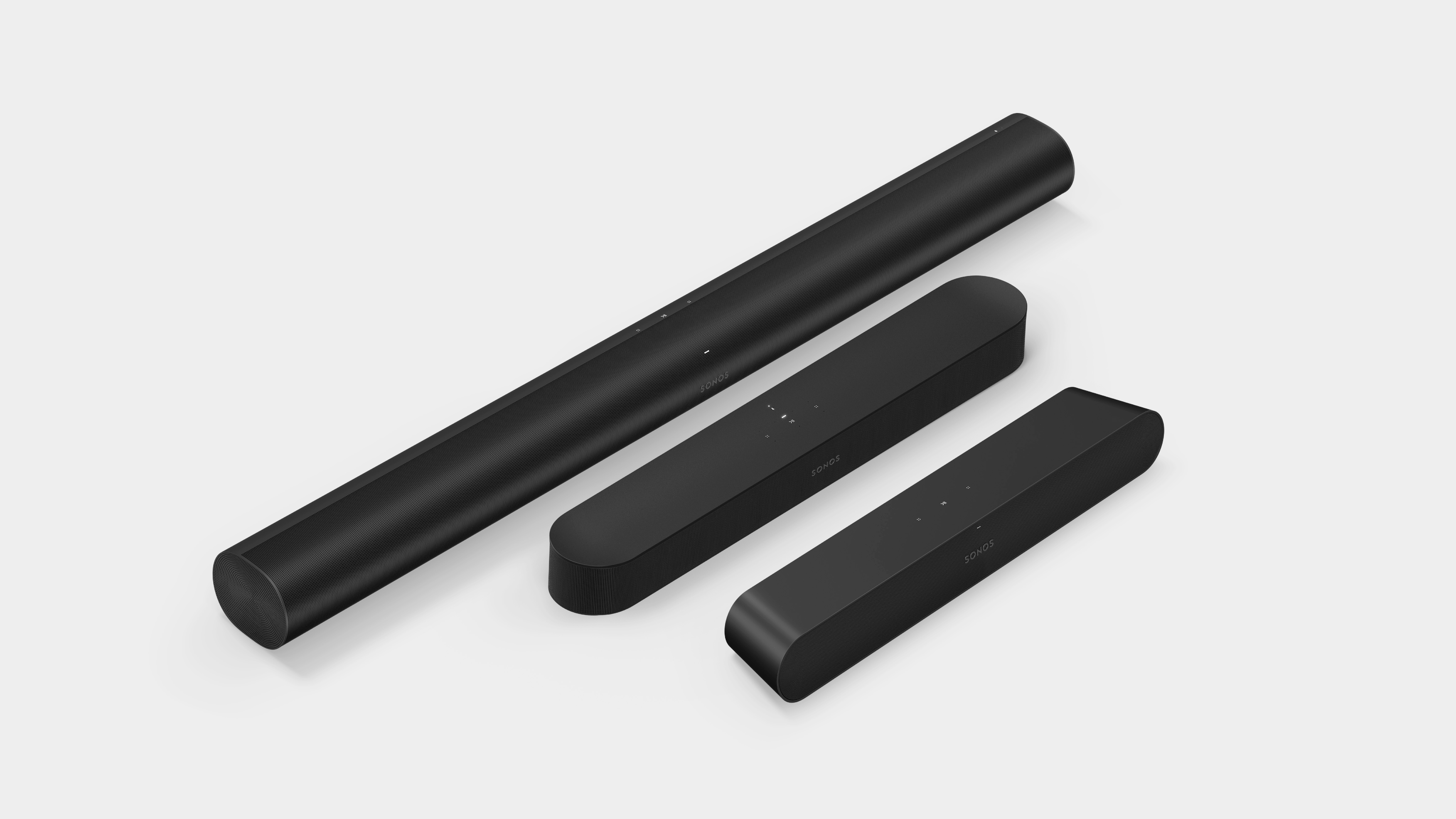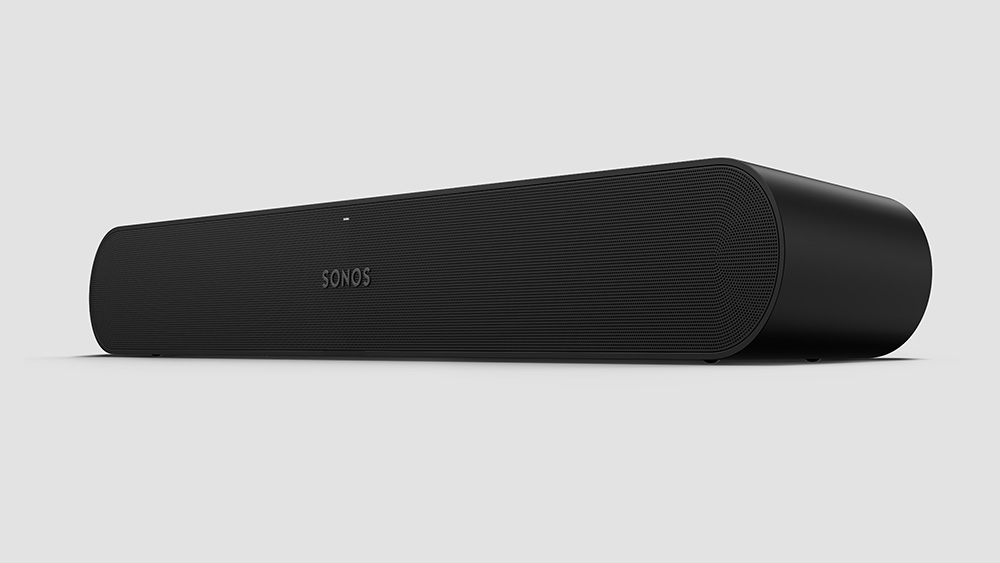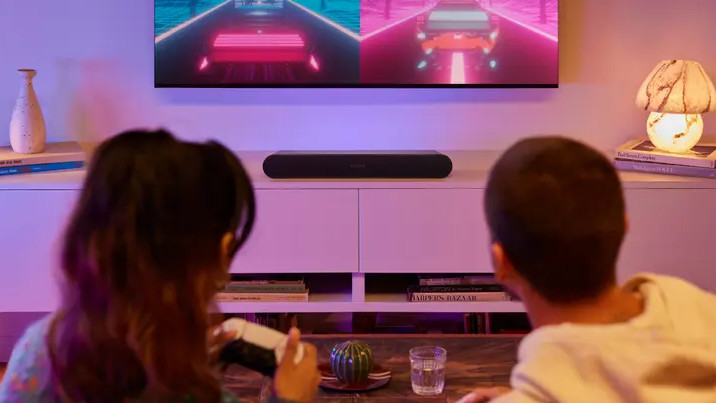Interview: How Sonos squeezed big sound into its tiny Ray soundbar
The secrets of a small soundbar revealed

Sonos recently announced the Ray, its smallest and least expensive soundbar to date, which will be available in early June for $279 / £279 / AU$399.
It measures just 559 x 71 x 95mm / 22 x 2.8 x 3.7 inches, features a tapered design, and is the first Sonos soundbar that's able to be placed within a TV unit without compromising the sound.
Yet Sonos is still promising big sound from it – and as you can read in our Sonos Ray review, it achieved that.
Evidently, making that happen required a lot of acoustic problem solving and creativity, and TechRadar spoke to Brandon Holley, product creation leader at Sonos, to get the inside story of how something that hopes to challenge the best soundbars can be so small and inexpensive.
Why so small?
We started by asking why Sonos wanted to go smaller in the first place, when the Sonos Beam (2nd Gen) is already an impressively compact device.
"If you step back and just think through the last couple of years – obviously it’s been a very challenging couple of years for folks. But I think we’ve all found new ways to use our living spaces, myself included. I live in a pretty small apartment in Boston, my living room was my fitness center. It was my office. And it was our live concert venue for quite a while.," explains Holley.
"We’re looking for someone that has a space like that – a small- to medium-sized room – that is trying to make that experience better. And the hope is that by coming in at our most approachable price point, we’re able to convince some more people to take a look at Sonos, and come into the fold."
Get daily insight, inspiration and deals in your inbox
Sign up for breaking news, reviews, opinion, top tech deals, and more.

Meaty sound for everyone
Early on in our conversation, Holley points out that the vast, vast majority of people only use the built-in speakers on their TV, not any kind of soundbar or surround sound system.
"What we know is that nine out of 10 TVs in the world still rely on the built-in TV speakers. And so the Ray is really trying to get to that place where we can help people upgrade their TV sound, and then, of course, bring all the great Sonos-ness to the party," Holley says.
In that case, what do we mean by "upgrade their TV sound"?
"One of the main aspects that we had to do was to create that cinematic bass feeling. We still want to get that great blockbuster, Hollywood, home-theater experience. And so to do that in a smaller size, required us to come up with some innovation.
"And one of those is what we’re calling a bass reflex system. So what we have here is a ported system. So if you know speaker technology, this is a ported box, but it uses an anti-distortion technology we’ve developed in Ray that really cuts down on the turbulence that you get out of a ported system, and delivers the bass notes without a lot of the turbulence sounds that you can get out of a ported box," Holley explains.
The turbulence Holley is referring to comes from the fact that the Sonos Ray's design required a strong curve to its bass port, and curves are the enemy of clean air movement.
"In an ideal situation, you’d have a nice, straight port, with no curves," says Holley. "It’s just like taking a turn on a highway or a freeway or something like that. The air on the outside has to move faster than the air on the inside to be able to keep up with things. And that creates vortices and turbulence. And that, in turn, creates acoustic elements that we don’t like."
So Sonos has developed an acoustic design for its port that changes the speed of the air on one side, and reduces the amount of turbulence. This is a boost for the sound in the Sonos Ray… but not only for the Sonos Ray.
"It’s very rare that you’ll be able to find a product that has a straight port in it. But often what you’ll see is that you just kind of live with the performance you get out of that. It’s likely something that we’ll use in every ported product we ever make, just because it’s such a kind of fundamental innovation," Holley says.
"This is the first time it’s appeared. It’s just a really good example of the 'necessity is the mother of invention' thing. We’re really short on space. Even if we wanted to put another driver into the product, we couldn’t find a place to put it, without making the product bigger. And then it’s not as versatile. It can’t be tucked into furniture."

Let's talk about talking
While Holley enthused about the potential bass performance of the Ray, in TechRadar's experience they key upgrade that most people who don't currently have a soundbar would like from their TV sound is clearer speech.
Hollay explained to us that Sonos' effectively considers the Ray to be a 3.0 system, with left, right and center channels… but those channels aren't divided cleanly between speakers. Usually in a 3.0 system, you'd expect a dedicated driver for the center that focuses on speech, but that's not the case here.
"A big part of the Ray – a lot of our speakers, but especially the Ray – is that we had to do a bunch with relatively few drivers, compared to something even like our Beam product," Holley explains.
"[We have] a total of four drivers, but the four drivers fire into eight different acoustic elements. So what we really are trying to do here is as much as we can, with as little as we can, from a driver point of view.
"You’ll have your two elliptical midwoofers. These are very similar to what you’ll see in our Beam product, but they’ve had some evolution for the Ray. And then there are two high-performance tweeters, and these fire into another one of our patented innovations, which is our split waveguide."
The split waveguide is a piece of physical design in front of the tweeters, which are positioned at the left and right ends of the product, with the full-range drivers in the middle. The idea of a split waveguide is to take sound that's been fired in one direction and to split it into two slightly different directions – in this case, that's partly towards the front, and partly towards the side, to create width.
On the face of it, this doesn't sound like an ideal setup for dialogue clarity, but Holley explains how Sonos is deploying it with speech in mind.
"We’re using full-range drivers, but then we add that ported system onto them. That gives us the ability to keep the full range for things like dialogue, but then go all the way down into the bass region, and then actually still deliver what we think is a great-sounding home theatre experience – that extra kind of bass kick.
"So in this case, when you listen to dialogue, a lot of what you’ll hear is coming from the full-range drivers. But what you’ll get is some sparkle from the high-frequency elements. Our tweeters are firing off left and right, but we do have [the split waveguide] in front of them that is directing some of that high-frequency energy right at the listener. And that is all built to actually create a really good-sounding speaker for dialogue. So everything is helping with the dialogue," Holley says.

What about positional sound?
The big thing with TV sound, including soundbars, right now is 'positional audio'. By this, we mean the convincing positioning of sound in space so that it feels connected to the action on screen. Surround sound is the best version of this, but a lot of soundbars, including the Sonos Beam and Sonos Arc, are designed around providing that feeling too – a car screeching from left to right across the screen should have sound that moves convincing with it, even though the audio is coming from a single box.
But the way to get really convincing positional audio is to have a lot of speaker drivers, and plenty of space to arrange them. The Sonos Ray doesn't have either of these, so we ask Holley whether people should expect a less convincing element of positional audio than they'd get from the Beam or Arc?
"That’s probably a fair statement at its core," says Holley. "There are a few things I would point out. There’s a healthy amount of sophisticated software going on to have the four drivers share duties, and the Ray processing that we use to build the left, right and center channels and various frequencies – it does make the speaker sound a lot wider, and even more precise than maybe you would expect based purely on the number of drivers. That’s one of the, I think, great innovations over the last several years, just in the DSP [digital signal processing] realm – being able to create a sophisticated experience with fewer drivers is very possible."
With no HDMI port, the Ray also isn't capable of receiving a Dolby Atmos signal, which again means there's an element of the latest and greatest positional sound that it can't do anything with. But Holley points out that the Ray is still capable of receiving surround sound, and can be expanded into a true wireless surround system if you add other Sonos speakers.
"Yeah, it doesn’t have Atmos, so you’re not going to be able to decode all the Atmos-specific precision there. But it does have Dolby Digital 5.1, which I think a lot of folk, especially if you’re coming from something like a TV that has nothing hooked up to it currently… if you’re able to grab a couple of Symfonisk bookshelf speakers, and create [a surround system]… Even with a 5.0 system, you’re going to be really, really happy with the positioning and the appearance of the surround sounds moving around you."
- Read our Sonos Ray vs Sonos Beam and Sonos Ray vs Sonos Arc comparisons for more details on the new soundbar

Matt is TechRadar's Managing Editor for Entertainment, meaning he's in charge of persuading our team of writers and reviewers to watch the latest TV shows and movies on gorgeous TVs and listen to fantastic speakers and headphones. It's a tough task, as you can imagine. Matt has over a decade of experience in tech publishing, and previously ran the TV & audio coverage for our colleagues at T3.com, and before that he edited T3 magazine. During his career, he's also contributed to places as varied as Creative Bloq, PC Gamer, PetsRadar, MacLife, and Edge. TV and movie nerdism is his speciality, and he goes to the cinema three times a week. He's always happy to explain the virtues of Dolby Vision over a drink, but he might need to use props, like he's explaining the offside rule.